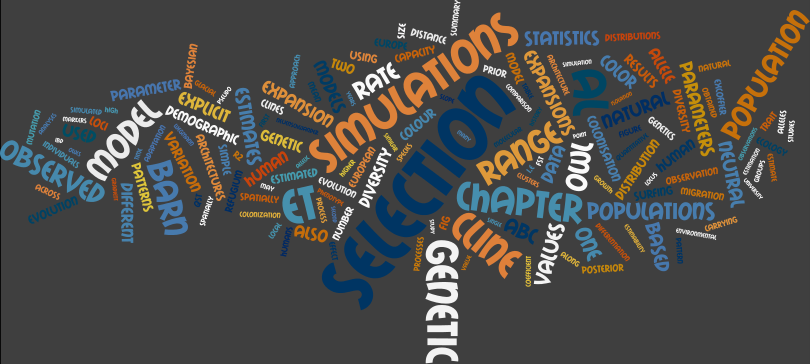Well, in the last post about genetic drift, we saw that this evolutionary force is nothing more than a lottery of genetic variants (or alleles) from one generation to the next. The consequences of this lottery are quite intriguing because we can observe that, eventually, we always get to a state of no diversity. IN average, this so-called fixation time (T) equals two times the number of chromosomes in the population (N): T=2*N. In summary, genetic drift is random (lottery) and destructive (reduces diversity)
Today, we'll have a look at a different context: range expansions. But what are range expansions? Or even, what are 'ranges', anyway?! So, a range is the area occupied by a given population. In other words, it is the spatial distribution of group of individuals. When this area (range) increases in size, almost always there is also an increase in the number of individuals, too. What is most important here, though, is that new areas become occupied. To simplify, we can imagine that the original population starts by being in only one determined area (or deme) and then began to occupy the surrounding demes (see image bellow). Each of these newly colonised demes can be named a new subpopulation, and these subpopulations put together form a metapopulation. Jargon aside, one population expands, takes over new territories and forms new subpopulations. So what?
So that every time one of these demes is occupied, we observe a phenomenon dubbed founder effect. This effect relates to the idea that, whenever a new area is occupied, not all individuals from the original population go there. I.e. each newly occupied deme takes but only a sample of the original population. If this sampling applies to individuals, it does apply as well to the genes within those individuals. This leaves a clear genetic signal of diversity loss in the new population. It's like there was an acceleration of the genetic drift effect.
Alright, but where is the surf of alleles? Well, the alleles hitch a ride on the wave of expansion, also in a random manner, but when it happens a very distinctive pattern is left behind. The figure bellow - extracted from Excoffier and Ray's 2008 paper in Trends in Ecology and Evolution - presents a very nice cartoon of what is the pattern left by this process:
What we see here is that the red allele, simply because it was in the right place at the right time (a), becoming the most frequent in the recently occupied areas (b,c). Were the green allele at the same spot, the same would probably have happened for it. This all happens because a range expansion is a series of founder-effect events. At every new deme that becomes occupied, only a sample of the previous deme's diversity is carried along. Soon enough, it becomes quite easy to track the fixation of one or other allele along the path of this expansion. This allele surfing has already been studied from many angles with simulations and also has many natural cases in which it seems to be the best explanation for observed patterns. However, maybe the most dramatic example of this process comes from experiments on bacteria, like the one run by Hallatscheck and colleagues in 2007 (PNAS), whose figure no. 1 is shown bellow:
In this figure, we see the development of a bacterial colony on a culture plate (A) that expands from it center to the edges (B), creating several patterns of fixation of red or the green alleles as highlighted (C). Overall, we can consider allele surfing to be spatial equivalent of genetic drift, which occurs in a single population through time. This idea was first presented by Slatkin and Excoffier in 2012 in the journal Genetics, and it makes a very nice reading for whoever is interested in more details of this story.
That's all for today. Allele surfing will definitely come back in more posts, once we have discussed natural selection. Come back soon to check it out and see you later!





